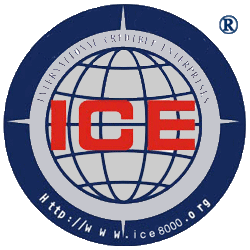Identification of untrustworthy related behavior and responsibility attribution-World Credit Organization
3.2 Untrustworthy related behavior and identification of responsibility attribution
The identification of untrustworthy related behaviors and responsibility attribution is a right and wrong identification standard and service designed by the World Credit Organization (WCO). .ice8000.org/acnhwgc/95.htm).
People can use this credit service to identify right from wrong. This service can be an independent service, and at the same time, it is generally included in the practice procedures such as internal complaints and credit warnings. Therefore, it is generally not recommended for customers to use the service alone.
3.2.1 Illustrated Flowchart of Untrustworthy Related Behaviors and Attribution of Responsibilities

Notes:
One, do not violate the above process. It is a mistake for some practitioners to skip the second step in practice, or not state the second step in the appraisal documents. Because there must be untrustworthy behavior before there can be untrustworthy related behavior.
Second, each of the above steps must not be short or confusing. The name of the practice document may be different, but the relevant content must be expressed.
Third, don't directly identify the perpetrator as a dishonest related party. It turns out that the old version is like this. This is no longer the case in the new version. The correct approach is: first identify the untrustworthy related behavior, and then identify the perpetrator as the unit responsible for the untrustworthy related behavior or the individual responsible for the untrustworthy related behavior.
Fourth, the process in the standard is relatively general, and the above process is the decomposition of the process in the standard.
3.2.2 Standards for untrustworthy association behavior
1. It is noted that, if there is no contrary reason, people usually reasonably believe that there is a certain degree of mutual influence between the business behavior and business reputation of affiliated organizations. Therefore, organizations with good faith intentions often actively urge their affiliated organizations to avoid dishonest behavior or to correct dishonest behavior in a timely manner.
It is also noted that some people seek dishonest benefits by manipulating affiliated organizations directly or indirectly controlled by them to engage in dishonest behavior.
I also noticed that some organizations' untrustworthy behavior benefits are ultimately shared or even exclusively enjoyed by their affiliated organizations.
Admonish affiliated organizations to abandon evil and do good, and refuse to enjoy the dishonest benefits delivered by affiliated organizations. It is the social responsibility of every human being on earth. This social responsibility can be called "no evil", which is the minimum standard of social responsibility , is the content of social responsibility that every individual, unit, and region should undertake. If everyone refuses to recognize or assume this social responsibility, the moral foundation of human beings will be eroded and human well-being will be lost.
To sum up, organizations associated with the person responsible for the dishonesty have the obligation to urge and advise the person responsible for the dishonesty to correct their dishonest behavior, and have the obligation to refuse to enjoy the dishonest proceeds delivered by the affiliated organization to prove that they have not sought or shared the dishonesty proceeds.
2. If an organization has an affiliated relationship with the person responsible for the dishonest behavior, after receiving a letter of persuasion or related letters from a third party, if it still does not actively urge and advise the person responsible for the dishonest behavior to correct the dishonest behavior, or insists on using the affiliated organization Such inaction or negative behavior is the tolerance of the untrustworthy behavior of the affiliated organization, and the toleration behavior is the untrustworthy related behavior. The organization and the relevant credit responsible persons belong to the organization responsible for untrustworthy related behaviors.
3. The nature of untrustworthy related behavior is a kind of evil-tolerant behavior, and it is a kind of [the bottom line behavior of refusing to assume social responsibility]. Although the untrustworthy related behavior is not a dishonest behavior, and although the organization responsible for the untrustworthy related behavior has not directly engaged in the untrustworthy behavior, based on some or all of the following reasons, before the untrustworthy related behavior or related untrustworthy behavior is corrected, the integrity Willingness and business conduct deserve full vigilance from stakeholders and prudent interactions with them:
(1) The organization responsible for the untrustworthy related behavior often has a certain indirect causal relationship with the untrustworthy behavior;
(2) The organization responsible for the untrustworthy related behavior may be the actual beneficiary or potential beneficiary of the untrustworthy behavior;
(3) The organization responsible for the untrustworthy related behavior may be the mastermind behind the untrustworthy behavior;
(4) The organization responsible for the untrustworthy related behavior may be the behind-the-scenes supporter of the untrustworthy behavior;
(5) The organizations responsible for untrustworthy related behaviors may be the learners, inheritors, and reserve teams of the fraudulent techniques of the responsible person;
(6) The organization responsible for the untrustworthy related behavior may be a deceptive prop designed by the person responsible for the untrustworthy;
(7) Organizations responsible for untrustworthy related behaviors are under the control or influence of the person responsible for untrustworthiness, and may copy or disguise the profitable untrustworthy behaviors, and may also engage in other untrustworthy behaviors.
4. Organizations responsible for untrustworthy related behaviors are temporary warning credit identities. If the following events occur, the credit identities will be automatically cancelled:
(1) The person responsible for the dishonesty has corrected and repaired the dishonest behavior;
(2) There is evidence to prove that the organization responsible for the untrustworthy related behavior has actively taken measures to supervise and persuade the person responsible for the untrustworthy to correct or repair the untrustworthy behavior;
(3) Organizations responsible for untrustworthy related behaviors actively take measures to supervise and persuade the responsible persons to correct and repair untrustworthy behaviors, and donate all the untrustworthy proceeds they have obtained to social welfare organizations.
3.2.3 Standards for Controlling Untrustworthy Associated Behaviors, Controlled Untrustworthy Associated Behaviors, and Influencing Untrustworthy Associated Behaviors
1. Untrustworthy associated behaviors that meet one of the following factors in the association relationship should be identified as controlling untrustworthy associated behaviors, and the perpetrators and relevant credit responsible persons should be identified as responsible organizations for controlling untrustworthy associated behaviors:
(1) The person responsible for the untrustworthy related behavior is the direct or indirect controlling shareholder of the unit responsible for untrustworthiness;
(2) The person responsible for the untrustworthy related behavior has the right to appoint or decide the high-level personnel of the unit responsible for untrustworthiness;
(3) The person responsible for the untrustworthy related behavior has control over the person responsible for the untrustworthy due to loans, guarantees, purchases, and sales;
(4) The person responsible for the untrustworthy related behavior has control over the person responsible for the untrustworthy due to other reasons.
2. Untrustworthy associated behaviors that have one of the following factors in the association relationship should be identified as controlled untrustworthy associated behaviors, and the perpetrators and relevant credit responsible persons should be identified as controlled untrustworthy associated behavior organizations:
(1) Units directly or indirectly controlled by the person responsible for dishonesty;
(2) Units where high-level personnel are appointed by those responsible for dishonesty;
(3) Units where the person responsible for dishonesty serves as a senior member;
(4) Organizations controlled by persons responsible for dishonesty due to loans, guarantees, purchases, and sales;
(5) Organizations controlled by persons responsible for dishonesty due to other reasons.
3. Untrustworthy associated behaviors that meet one of the following factors in the association relationship should be identified as influential untrustworthy associated behaviors, and the perpetrators and relevant credit responsible persons should be identified as influential organizations responsible for untrustworthy associated behaviors:
(1) There is a direct or indirect investment relationship between the person responsible for the untrustworthy related behavior and the person responsible for the untrustworthy, but there is no controlling relationship;
(2) The person responsible for the untrustworthy related behavior and the person responsible for the untrustworthy are both the controller or the controlled person of the third party;
(3) Units where the persons responsible for untrustworthiness serve as middle-level managers and technical backbone;
(4) There are other related relationships, which can be reasonably considered by people to have an important influence on the behavior of the person responsible for dishonesty.
3.2.4 The attribution of responsibility, omitted, is basically the same as the attribution of responsibility for dishonesty.
3.2.5 The difference between untrustworthy behavior and untrustworthy related behavior
1. Untrustworthy related behaviors are premised and based on untrustworthy behaviors. Only with untrustworthy behaviors can there be untrustworthy related behaviors.
2. The identification of untrustworthy related behaviors is essentially a kind of credit punishment for untrustworthy related parties violating the bottom line of social responsibility (evil conduct). For example: the parent company of Yonghua Company is Yongtian Company. When Yonghua Company engages in a dishonest behavior, Yongtian Company may have four actions: a) support and participate, b) support but not participate, c) oppose, d) neither support nor oppose. If it is a, it belongs to joint dishonesty, and should also be identified as the person responsible for the dishonesty; if it is b or d, it belongs to dishonesty related activities.The above content is excerpted from "Introduction to ICE8000 Credit Knowledge" (written by Fang Bangjian, free to use, but please indicate the source)


